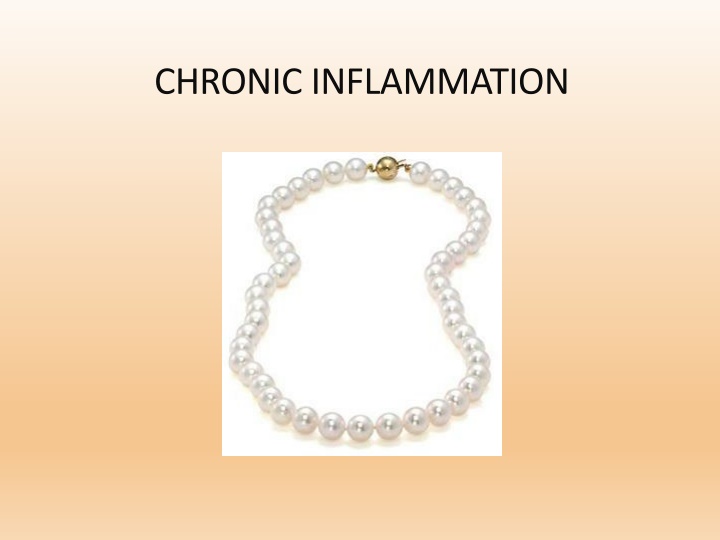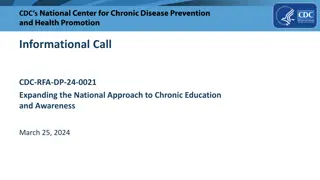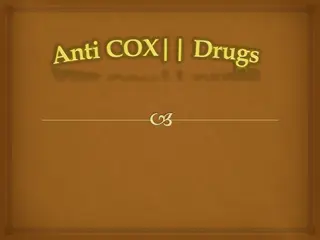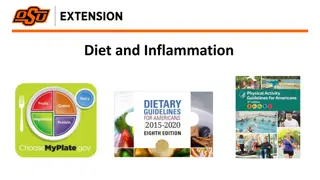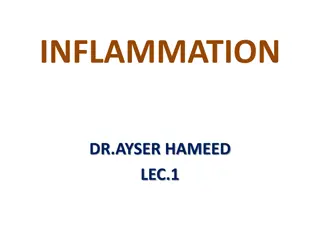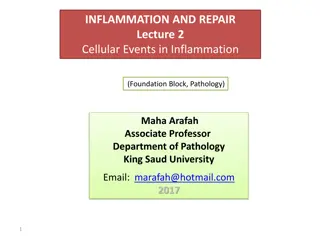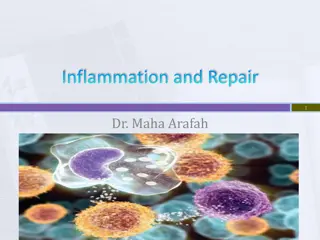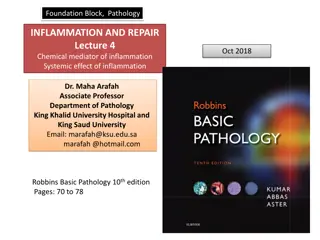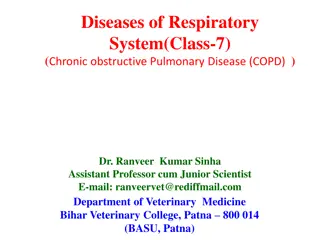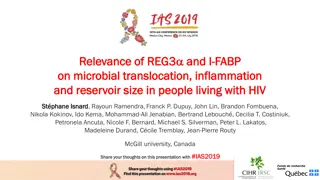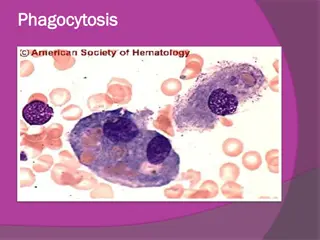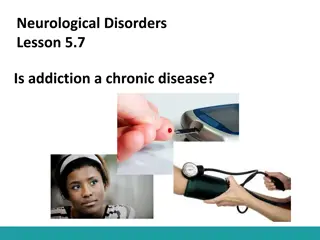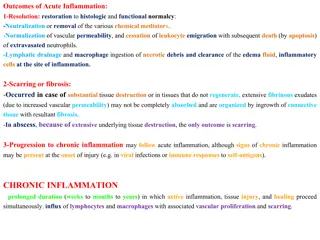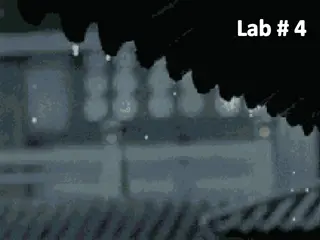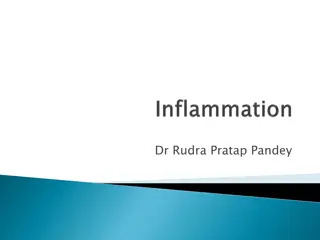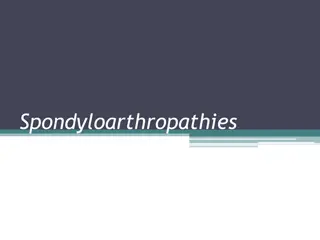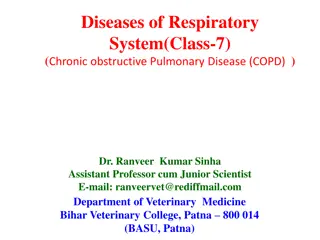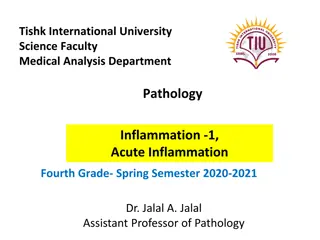Chronic Inflammation Processes
Chronic inflammation is a prolonged process involving active inflammation, tissue destruction, and tissue healing. It can result from various factors such as persistent infection, interrupted healing, or low-grade immune responses. The Players in this process include macrophages that respond to injury and inflammation. Acute and chronic inflammation differ in cellular infiltrates and tissue effects. Explore the complexities and outcomes of these inflammatory processes for a better grasp of pathological conditions.
Download Presentation

Please find below an Image/Link to download the presentation.
The content on the website is provided AS IS for your information and personal use only. It may not be sold, licensed, or shared on other websites without obtaining consent from the author.If you encounter any issues during the download, it is possible that the publisher has removed the file from their server.
You are allowed to download the files provided on this website for personal or commercial use, subject to the condition that they are used lawfully. All files are the property of their respective owners.
The content on the website is provided AS IS for your information and personal use only. It may not be sold, licensed, or shared on other websites without obtaining consent from the author.
E N D
Presentation Transcript
CHRONIC INFLAMMATION Chronic inflammation is a prolonged process (weeks-months-years) in which three processes are occurring simultaneously: Active inflammation Tissue destruction Tissue healing (repair & fibrosis)
OUTCOME OF ACUTE INFLAMMATION Complete Resolution due to elimination of the offending agent and regeneration of injured tissue with normal function Healing by connective tissue replacement (fibrosis/scar formation) Occurs after large tissue destruction, fibrinous exudation into serous cavities tissue without regeneration capabilities Progression to chronic inflammation Resulting in granuloma formation to wall off injurious agent and tissue fibrosis (scar formation)
CHRONIC INFLAMMATION Chronic inflammation can occur: Following acute inflammation Persistence of the inciting stimulus Interruption of normal healing Repeated episodes of acute inflammation Low-grade inflammatory response (without a proper acute response) due to: Persistent infection by intracellular microbes (TB, some viruses) Agents that incite a low grade immune response (some fungal infections) Prolonged exposure to low grade, potentially toxic exogenous or endogenous substances. Self-directed immune reactions.
CHRONIC INFLAMMATION Acute inflammation: Vascular changes, edema, neutrophilic infiltrate Chronic inflammation: Infiltration of mononuclear inflammatory cells (macrophages, lymphocytes & plasma cells) Tissue destruction due to persistent injury and inflammatory cells Attempts at healing by connective tissue replacement involving angiogenesis and fibrosis.
THE PLAYERS (MONONUCLEAR PHAGOCYTE SYSTEM) Macrophages Scattered all over (microglia, Kupffer cells, sinus histiocytes, alveolar macrophages, etc.) Circulate as monocytes and reach site of injury within 24 48 hrs. and transform Become activated by T cell-derived cytokines, endotoxins, and other products of inflammation
THE PLAYERS T and B lymphocytes Antigen-activated (via macrophages and dendritic cells) Release macrophage-activating cytokines (in turn, macrophages release lymphocyte-activating cytokines until inflammatory stimulus is removed) Plasma cells Terminally differentiated B cells Produce antibodies
THE PLAYERS Eosinophils - Found especially at sites of parasitic infection, or at allergic (IgE-mediated) sites Mast cells (basophils)
The Dominant Cellular Player in Chronic Inflammation is The Tissue Macrophage Blood monocyte migrate into tissue within 48 hours after injury Tissue macrophage (RES) Kupffer cell (liver) Microglia (CNS) Histiocytes (spleen) Alveolar macs (lung) and differentiate It is joined by lymphocytes and plasma cells, however mast cells and eosinophils are as well involved in chronic allergic diseases Plasma cell Lymphocyte
During chronic inflammation macrophages serve to eliminate injurious agents and initiate repair- however, they are as well responsible for much of the tissue injury that occurs Tissue macrophage Activated T cell or NK cell Non Immune activation: Endotoxins, fibronectin, chemical mediators IFN-g Activated macrophage Fibrosis (Scaring) Growth factors involved in fibroblast proliferation (PDGF,TGFb,FGF) Angiogenesis factors (FGF,VEGF) Collagen deposition (IL-13 and TGFb) Tissue injury Toxic oxygen metabolites Metallo-proteases Coagulation factors AA metabolites and NO
2 BASIC TYPES Chronic Nonspecific Inflammation 1. A preponderance of mononuclear cells (macrophages, lymph, plasma cells) often with fibrosis and vascular proliferation. 2. Fibrosis (scarring) & distortion of tissue architecture. 3. Mediated by the interactions of mono/macrophages with lymphocytes 1. Cytokines from macrophages activate lymphocytes which produce cytokines activating macrophages 2. B-cell activation occurs via macrophage presented antigens producing antigen specific plasma cell proliferation
2 BASIC TYPES Granulomatous Inflammation: A distinctive form of chronic inflammation characterized by focal accumulations of activated macrophages. 1. Foci of epithelioid macrophages are surrounded by a collar of lymphocytes. Macrophages may coalesce to form giant cells 2. Areas of central necrosis (caseous necrosis) may be present in infectious granulomas (TB). The necrotic tissue consists of microbe-filled macrophages killed by T-lymphocytes, cytokines, activated macrophages. 3. Foreign body granulomas are elicited by ~inert foreign bodies 4. Immune granulomas are formed by T-cell mediated responses to persistent antigens. 5. Granulomatous inflammation is a distinctive inflammatory reaction with a few important causes both infectious or noninfectious.
CAUSES Persistent bactrial inf: TB, syphilis, borreliosis Persistent viral inf: Progressive chr. Viral hepatitis Immunological reactions: autoimmune disorders, delayed hypersensitivity, chronic transplant rejection Primary granulomatous disease: sarcoidosis Chr. Irritation: bronchitis in smokers Non-degradable (foreign body) particles Disease of unknown etiology: ulcerative colitis
Morphological Subtypes Of Macrophages Foamy Macro: Phagocytosis of lipid Hemosiderin laden macro: at site of haem. Epithelioid cell: in immune granuloma Giant cells: Langhans Type: in immune granuloma Foreign Body: in histiocytic granuloma Touton Type: after necrosis of adipose tissue
Lymphatics in Inflammation Lymph vessels & nodes filter and monitor the extravascular fluid that fails to return to the post- capillary vasculature. They represent a second line of defense in conjunction with the mononuclear phagocytic system to agents not contained by local responses.
Lymph Nodes and Lymphatics Lymphatics drain tissues Flow increased in inflammation Antigen to the lymph node Toxins, infectious agents also to the node Lymphadenitis, lymphangitis Usually contained there, otherwise bacteremia ensues Tissue-resident macrophages must then prevent overwhelming infection
SYSTEMIC EFFECTS Fever One of the easily recognized cytokine-mediated (esp. IL-1, IL-6, TNF) acute- phase reactions including Anorexia Skeletal muscle protein degradation Hypotension Leukocytosis Elevated white blood cell count
Systemic effects (contd) Bacterial infection (neutrophilia) Parasitic infection (eosinophilia) Viral infection (lymphocytosis) Sepsis (an overwhelming bacterial infection) the large number of microbes and endotoxin result in the production of large amounts of cytokines particularly TNF & IL-1- results in the onset of septic shock (DIC, hypoglycemia and cardiovascular collapse).
Systemic Effects of Inflammation 1. Cardiovascular response: 1. HR & BP 2. sweating redirection of peripheral blood flow 2. Constitutional responses: 1. Rigors 2. Chills 3. Anorexia 4. Somnolence 5. Malaise All due to cytokines
Outcome of chronic inflammation Ulcers Fistulas Granulomatous diseases Fibrotic diseases (Scaring) and combinations of the above
Consequences of Defective or Excessive Inflammation Defective inflammation Increased susceptibility and vulnerability to infection Delayed healing, inflammation is an essential part of healing in removal of damaged and necrotic tissue and stimulation of reparative processes. Excessive inflammation Allergic reactions of all types Autoimmune disorders Cancer Atherosclerosis/ischemic heart disease Some neurodegenerative disorders
Patterns of acute and chronic inflammation Serous Watery, protein-poor effusion (e.g., blister) Fibrinous Fibrin accumulation Either entirely removed or becomes fibrotic Suppurative Presence of pus (pyogenic staph spp.) Often walled-off if persistent Ulceration Necrotic and eroded epithelial surface Underlying acute and chronic inflammation Trauma, toxins, vascular insufficiency
Patterns of chronic inflammation Predominant changes 1. Proliferation 2. Exudation 3. Fibrosis 4. Ulceration
PROLIFERATION Granulation tissue Granuloma Round cell infiltrate
GRANULATION TISSUE Was used by surgeon for the red, granular tissue filling the nonhealing wounds Occurs: 1. After substantial tissue destruction eg: infarction, ulceration, abscess, surface wound that create large defects 2. When the Inflammation takes place in tissues that do not regenerate 3. When there is abundant fibrin exudation
COMPONENTS OF GRANULATION TISSUE 1. Macrophages, lymphocytes 2. Newly formed capillaries 3. Myofibroblasts 4. Extracellular matrix- collagen
EXUDATION Chronic abscess Pilonidal sinus Chronic suppurative osteomyelitis Actinomycosiss
FIBROSIS Cirrhosis of liver End stage kidney Honeycomb lung Obliterative intimal fibrosis in small arteries
ULCERATION Peptic ulcer Trophic ulcer due to impaired blood flow on the legs, associated with varicose veins Decubital ulcer due to long standing pressure + bacterial infection
CONCLUSIONS 1. 3 Processes occurring simultaneously 1. Acute inflammation 2. Tissue destruction 3. Tissue healing 2. Can occur: 1. 2. 3. After inadequate acute inflammation (Incomplete) Repeated acute inflammation (Interminable) Low grade inflammatory response (Improper) 3. Cellular response: 1. 2. Acute (PMNs) Chronic (macrophages, lymphocytes, plasma cells, eosinophils, mast cells) Tissue destruction Granuloma formation (giant cells, epitheliod cells) Connective tissue response (fibrosis& angiogenesis) Lymphatic system involvement 3. 4. 5. 6.
